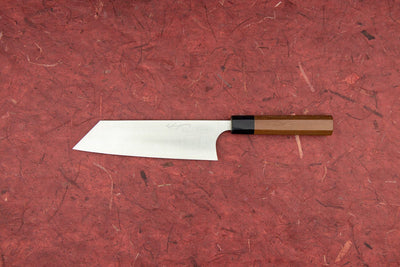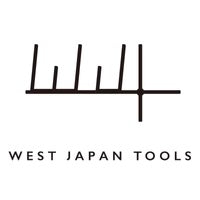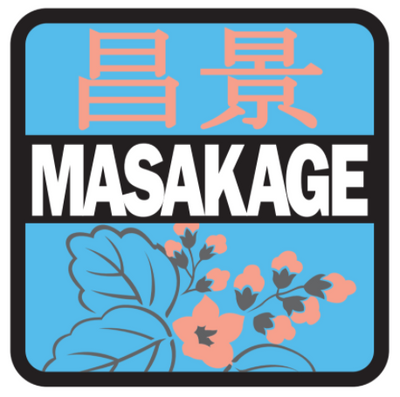Free shipping on orders over $100 - Excluding konro grills
Free shipping on orders over $100 - Excluding konro grills
Japanese Knives
Sharpening
Accessories
Knifemaker Profile: Takayuki Shibata
July 12, 2023 5 min read

Takayuki Shibata is visiting Knifewear in August of 2023 and will come visiting our Vancouver and Calgary store. Sign up to our mailing list below to stay up to date about this event, or any future events we'll be having.
This is an excerpt from the The Knifenerd Guide to Japanese Knives by Kevin Kent released in 2018.
“By starting the Masakage brand and selling more handmade knives, I want to create the job for young blacksmiths. Ultimately it will lead to preserving the traditional craftsmanship in Japan. That is how I find meaning in this job,” says Shibata-san
Takayuki Shibata-san is the Wayne Gretzky of knife sharpening. Seriously.
I’m a great knife sharpener. I bet I’ve sharpened more than 10,000 knives. When I started Knifewear, I would sharpen up to 200 knives a day by hand. I’m quite good, but I’m no Wayne Gretzky.
Every time I sharpen knives with Shibata-san, I see something new and I am still surprised. Many people may not notice a difference between his results and mine, but to me, it’s glaring. I’m lucky to know him.
What sets Shibata-san out as one of the best knife sharpeners in Japan is that he has developed an original sharpening method that works great on vegetables and raw fish. His method encourages incredible edge retention and it makes stainless steel cut as nicely as carbon steel. He knows that if you sharpen a knife to 800 grit, it will stay sharp a long time, but it will not cut smoothly. In other words, it will make quick work of an onion and it can blast through a tomato skin, but it will tear the flesh of a fish if you try to slice sashimi. If you sharpen both sides to 8,000 or 10,000 grit, you will have an amazing sushi slicer, but your knife will lose that insane edge very quickly.
 Photo by Visti Kjar.
Photo by Visti Kjar.
Shibata-san wants the best of both worlds.
The standard knife-sharpening technique, around the world and in Japan, is to use the same grit of waterstone on both sides of the blade, but Shibata-san thought he’d experiment by using different grits on each side. For most of the knives he sharpens, the left side of the blade he sharpens to an 800-grit stone and on the right side he goes up to 8000 grit. This gives an edge that bites into a tomato skin with ease, but is smooth enough to slice sashimi with elegance. Try a new Masakage or Koutetsu knife to know what I mean.
The best-dressed man in Fukuyama, Shibata-san also loves cars and motor- cycles. He traded his ’80s Chevy Camaro for a Harley Davidson motorcycle. Previous to his knife-sharpening career, he worked as a machinist for Mitsubishi. It makes sense: both jobs had him removing steel in a controlled way. He just uses different tools for different products.
On a trip to the United States more than a decade ago, Shibata-san realized that there are very few “Made in the U.S.” products these days.
He had heard so much about the high quality of American craftsmen of the past, however, and he wanted to find the modern-day equivalent, not just another Harley. Searching hard to find just a few handmade items made him proud that in Japan, it is easy to find high-quality locally made goods.
He decided he wanted to bring handmade Japanese products to the world. He first thought swords would be the way to go, but he quickly learned how impossible it would be: enormously expensive plus huge import-export difficulties.
Instead, in 2007, he decided to export handmade Japanese kitchen knives. This was an opportunity to promote Japanese craftsmanship and culture outside of Japan. This was the genesis of Masakage Knives.
Sales were slow at first and Shibata-san thought a shake-up was needed. He asked for my opinion and, obviously, I was more than happy to prattle on about knives with him throughout that following year.
Masakage knives are what you get when a master knife sharpener, some of the planet’s best blacksmiths and an opinionated chef (me) get together. In 2009, Shibata-san launched seven unique lines for Masakage, and he has since grown the number to nine lines, plus the occasional special edition. The goal? To make knives that people could fall in love with.
During the design process, he and I looked at every knife in each line. We thought about how they would be used. We looked at the balance and the feel in the hand. We made knives that are Japanese, but with a nod to Western users. We moved the handles back from the blade a bit to accommodate larger mitts like mine. We made the nakiri knives longer, so they would be more comfortable for taller guys like myself. And we made them tough, so they could survive excessive sharpening. (I always sharpen nakiris more often than the rest of the knives in my kit.)
We discussed (argued?) about which finishes look the best and slide through food better. Handle colours, materials and the overall look had to be amazing. We love sexy knives, and we figured that others would, too. We named each line after considering the look and feel of every knife. The blacksmiths generally trusted us, listened to our directions, and made some substantial changes. I am very proud of these knives and I am amazed that Shibata-san let me be part of this process.

After enjoying the success of Masakage Knives for a few years, Shibata-san started thinking about a new style of knife. He wanted the edge of the blade to be a bit flatter than a gyuto, more like a nakiri. And he wanted a crisp point on the tip, something that is nice for scoring vegetables or squid, for example. Before long, he was making prototypes of his workshop’s first Koutetsu knives.
“What I was specifically particular about when I made Koutetsu was “kire aji” (taste of sharpness)—in other words, how you feel when you cut,” says Shibata-san. The legendary sharpness of Koutetsu knives is obvious the first time you use one. Sharpness was not his only consideration, however; he also polishes the spine for a comfortable feel. He leaves the sides of each blade a little rough, so food slides off better, and he makes an aggressive angled tip like the front of the boat these knives are named after. (Koutetsu was a French-built iron-sided ship from 1864 that eventually became part of the Imperial Japanese Navy. She had a distinctive pointed bow, the same shape as Koutetsu knives.)
Art over beauty—that is how Shibata-san describes Koutetsu knives, “Cheetahs have evolved to be faster (than other animals.) All the muscles and shapes are evolved to run faster, and they are beautiful. I want to create something like that. The purpose of kitchen knives is to cut. If I focus only how it cuts, getting rid of things that does not need, I think the knife will become an excellent knife, and have beauty.”
A shokunin doesn’t just try to get better at his or her job. They also try to make the world a better place. Shibata-san always thinks about that. I hope some of his wisdom rubs off on me.
Find Shibata-san knives and other products
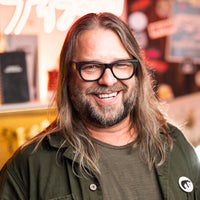
Kevin Kent
Knifewear owner and president Kevin Kent’s fascination with handcrafted Japanese knives began while he was working as sous-chef for the legendary chef Fergus Henderson at St. John restaurant in London, England. Back in Canada in 2007 he began selling them out of a backpack from the back of his bicycle, while working as a chef in Calgary. He considers his chef years as the best education for being an entrepreneur. Being a chef takes long hours, involves hard work, both mentally and physically, and chefs must be able to put out fires, both literal and figurative, with extreme competence. Today, Kent is still just as obsessed with Japanese knives as the day he first held one. A couple times a year, he travels to Japan to meet with his blacksmith friends and drinks far too much sake. Each visit he learns more about the ancient art of knife-making. Through this obsession Knifewear has expanded to include five Knifewear stores in Calgary, Vancouver, Ottawa, and Edmonton. Plans are also underway to open a store in Kyoto, Japan. He refuses to confess how many Japanese knives he owns … but he admits the number is rather high. Follow Kevin on Twitter at @knifenerd and find out more about the stores at knifewear.com, and if you meet him in person, ask him to tell you his Lou Reed story.
Subscribe
Sign up to get the latest on sales, new releases and more …

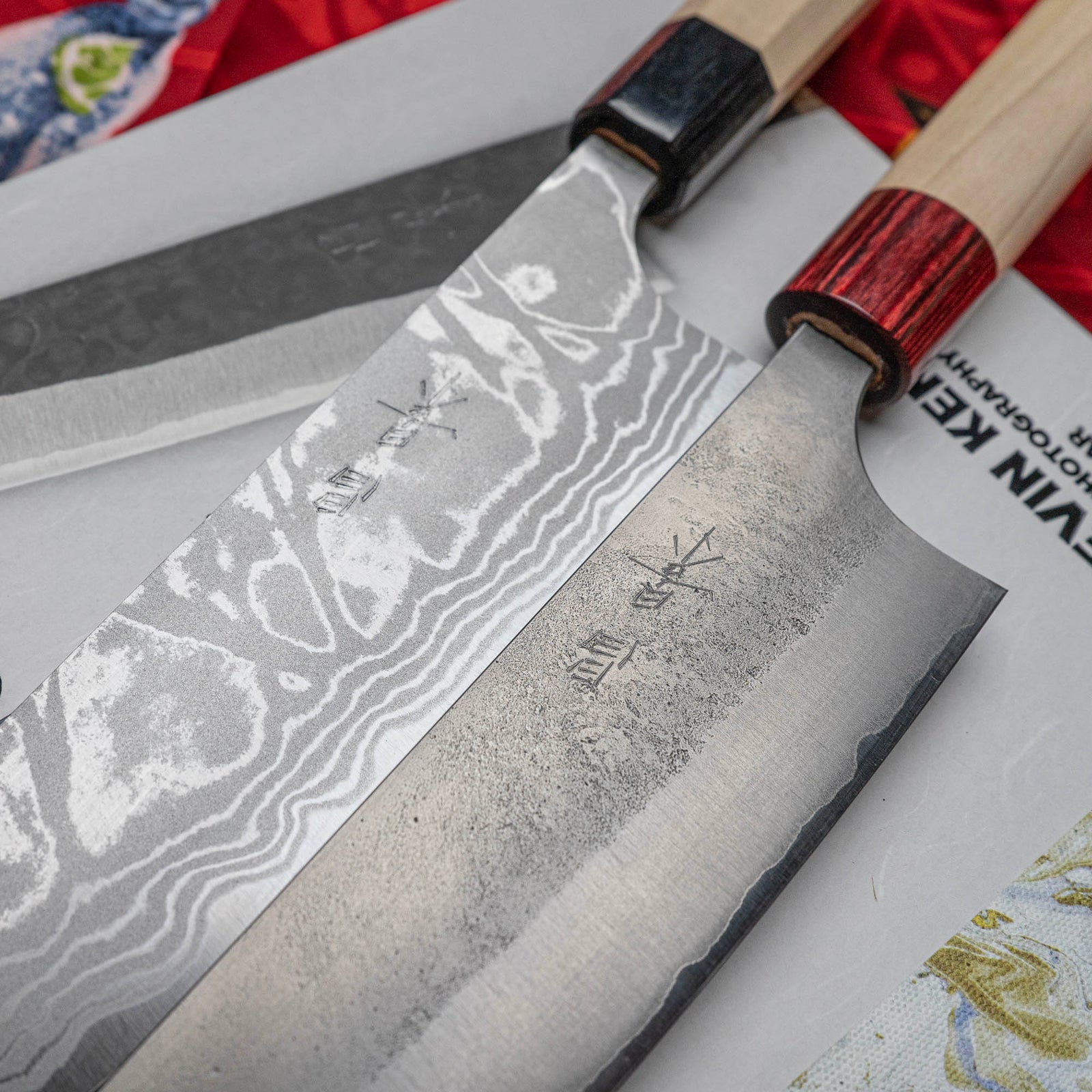
















 Photo by
Photo by